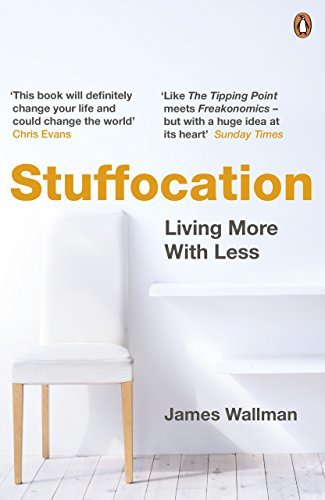What do you think?
Rate this book


In this groundbreaking book, trend forecaster James Wallman reveals the world's growing sense of Stuffocation - and how we can move away from it
'Like The Tipping Point meets Freakonomics - but with a huge idea at its heart' Sunday Times
We have more stuff than we could ever need - clothes we don't wear, kit we don't use, and toys we don't play with.
But having everything we thought we wanted isn't making us happier. It's bad for the planet. It's cluttering up our homes. It's making us feel 'stuffocated' and stressed - and it might even be killing us.
In this groundbreaking book, trend forecaster James Wallman finds that a rising number of people are turning their backs on all-you-can-get consumption, from the telecoms exec who's sold almost everything he owns, to the well-off family who have moved into a remote mountain cabin.
Wallman's solution to our clutter crisis is less extreme, but equally fundamental. We have to transform what we value. We have to focus less on possessions and more on experiences. Rather than a new watch or another pair of shoes, we should invest in shared experiences like holidays and time with friends.
With intriguing insights on psychology, economics and culture, Stuffocation is a vital manifesto for change. It has inspired those who have read it to be happier and healthier, and to live more, with less.
James Wallman is a journalist, trend forecaster, speaker, and author. He has written for GQ, the New York Times, the FT, and advised clients such as Absolut, BMW, Burberry, and Nike. James wrote the futurology column in T3 magazine and was editor of The Future Laboratory's forecasting publication. He has an MA in Classics from Oxford University and an MA in Journalism from the University of the Arts London. He has lived in France, Greece, and Palo Alto in California and currently lives in London with his wife and children.
351 pages, Kindle Edition
First published December 1, 2013
Trained to cope with scarcity, we have struggled with abundance.
James Wallman
In 1991, the average American bought 34 items of clothing each year. By 2007, they were buying 67 items every year. It means Americans buy a new piece of clothing every four to five days.
James Wallman
Minimalism is not defined by what is not there but by the rightness of what is and the richness of what is experienced.
John Pawson


Materialism, and the consumer culture and capitalist system it underpinned, was the right idea for the right time. It meant that the masses, for the first time in human history, lived in abundance rather than scarcity. It gave us washing machines, TVs, and indoor toilets. It delivered clean water, the welfare state, and health care that has improved the length and quality of our lives.
We may have reached the apex of our (over)consumption on clothes as well. After decades of going up, perhaps we have reached “peak clothes”. In 2007, the average American bought almost twice as many items of clothing each year compared to 1991. But by 2012, the number they were buying had stopped rising, and had even fallen slightly, from 67 to 64 items.
